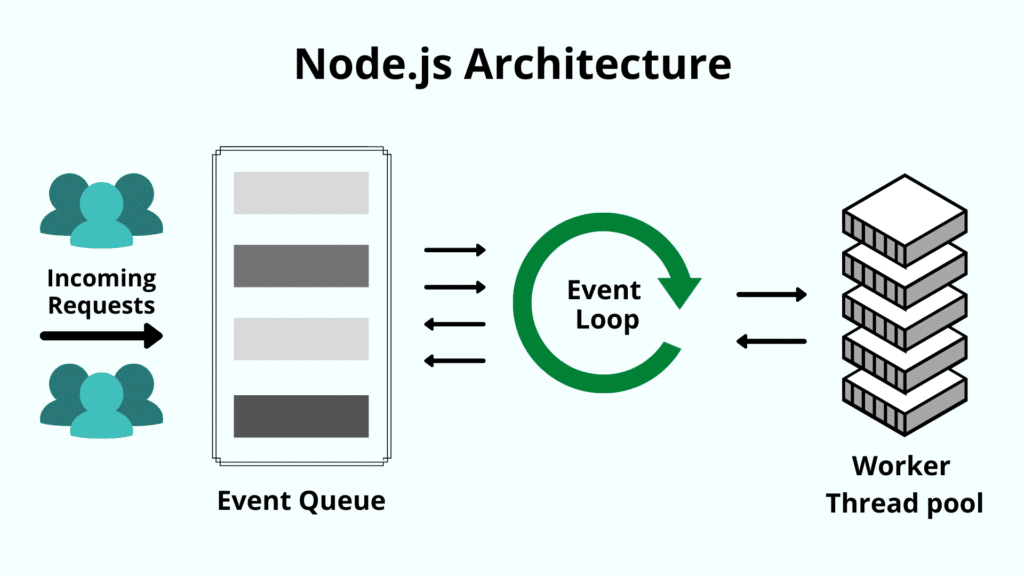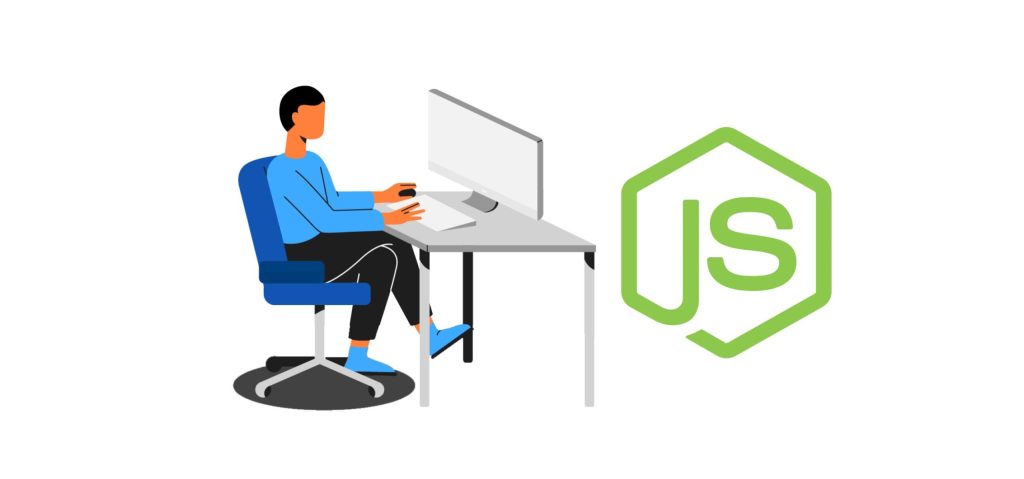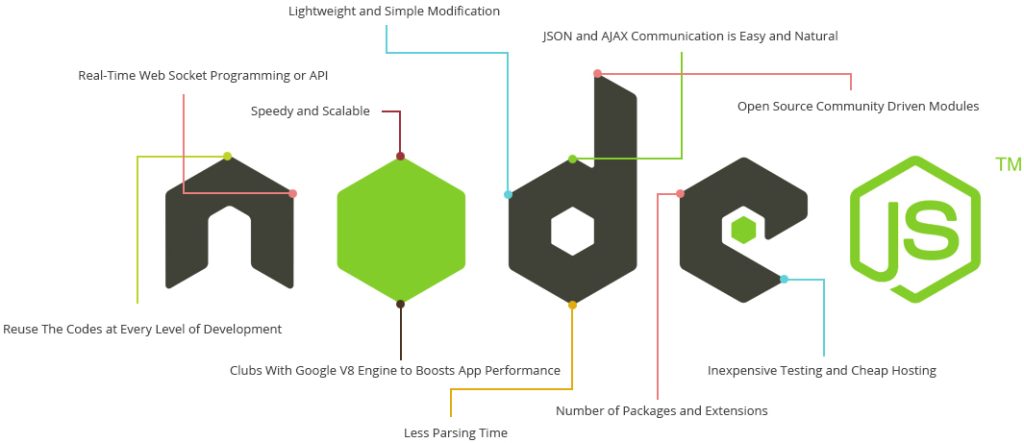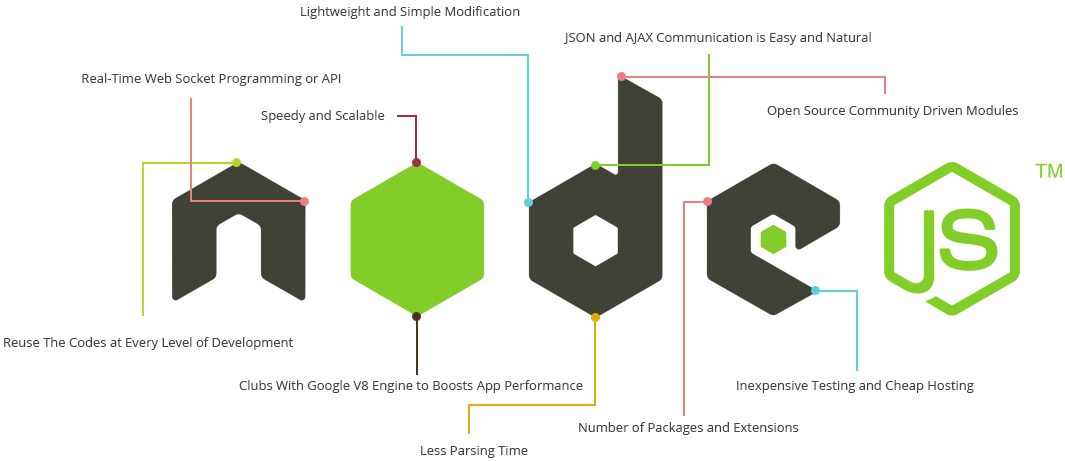JavaScript is a popular programming language used to create features on websites. For a long time, it was mainly used for making web pages interactive. However, developers had to use different languages for the front-end (what you see on a website) and back-end (server-side) parts of a website.
Later, Node.js was created. It’s like a toolbox for running JavaScript on servers. Node.js is fast and works well for real-time applications because it can handle many things at once. It’s a single-threaded, open-source tool that can run JavaScript code on servers and handle networking tasks. This means developers can use JavaScript for both the front-end and back-end of a website, making things simpler and more efficient.
1.What Is Node.js Written In?
Node.js is made up of different parts, like a toolbox. It includes Google’s V8 JavaScript engine, a platform layer called libuv, and a core library. These parts are responsible for running JavaScript on servers. The V8 engine, which is like the heart of Node.js, is written in a language called C++. This allows Node.js to do things like managing network connections and accessing internal system functions, making it versatile and powerful for various tasks. So, Node.js uses these components to run JavaScript on servers effectively.
2.Node.js Architecture and How It Works
In some programming languages like Java, when many clients make requests to a server at the same time, the server uses different threads (kind of like separate workers) to process each request. Each incoming request gets its own thread to handle it. This is known as a “multi-threaded request-response model.”
Imagine a restaurant where each customer has their own dedicated waiter to take their order and serve their food. If there are more customers, the restaurant hires more waiters (threads) to handle them all.
On the other hand, Node.js uses something called the “Single Threaded Event Loop” approach. Instead of assigning a separate waiter (thread) to each customer (request), it uses just one waiter (thread) to handle all the customers’ requests. This waiter is really fast and can quickly switch between customers to make sure everyone gets served. It’s like having a super-efficient waiter who serves multiple tables in a restaurant.
So, in simple terms, Node.js handles many clients’ requests using just one thread, and it does this by rapidly switching between tasks, while other languages like Java use multiple threads to handle different clients separately.

- Node.js has a small group of worker threads (like assistants) ready to help.
- When a request comes in, Node.js puts it in a line, like people waiting in a queue.
- The main part, called the “Event loop,” is like the core worker. It watches the queue for requests.
- If a request is simple and doesn’t need much time, the Event loop takes care of it right away and sends a reply.
- But if a request needs more time, like doing something that might take a while, the Event loop asks one of the worker threads to handle it. These workers do the heavy lifting.
- The Event loop keeps an eye on those longer tasks and puts them back in the queue once they’re done. This way, it doesn’t get stuck waiting and can keep handling new requests.
Node.js is like a fast food restaurant with one super-efficient cook (the Event loop) handling orders quickly. If an order is really big (a task that takes time), the cook asks one of the assistants (worker thread) to help, so they can continue taking new orders. This way, Node.js uses fewer resources and works great for real-time applications. But for heavy, data-intensive tasks, other languages like Java might be a better choice.
3.Features Of Node.js
- Easy to Start: Node.js is beginner-friendly with lots of tutorials and a big community. It’s a great choice for people new to web development.
- Scalable: It can handle many users at the same time, making it great for applications with lots of visitors.
- Speedy: Node.js is fast because it can do many things at once without getting stuck.
- Lots of Tools: There are tons of free tools (packages) available for Node.js that can make your work easier. There are over a million of these packages in the NPM ecosystem.
- Powerful Backend: Node.js is built using speedy languages (C and C++) and has features for networking, which is great for building powerful server-side applications.
- Works Everywhere: You can use Node.js to build websites, desktop apps, and even mobile apps. It works on different platforms.
- Simplified Development: It’s convenient for developers because you can use JavaScript for both the front-end and back-end of a project, making it easier to manage and maintain.

4.Market Size
- Growth: Websites have grown a lot in the last 20 years, and Node.js, a popular tool for building websites, has also grown rapidly. In 2018, it was downloaded over a billion times.
- Usage: Node.js is used in about 1.2% of all websites worldwide, which means it’s powering more than 20 million websites.
- Popular Companies: Many big companies use Node.js for their web services. Some examples include Twitter, Spotify, eBay, Reddit, LinkedIn, and GoDaddy.
In summary, Node.js is widely used in web development and trusted by many big companies to run their websites and web applications.
5.Applications Of Node.js
- Real-time Chats: Node.js is great for building chat applications and chatbots because it can handle real-time communication. It’s like having a fast, single-threaded messenger that can handle group chats and push notifications easily.
- Internet of Things (IoT): Node.js works well for IoT applications, which involve many devices sending lots of small pieces of data at once. Node.js can handle these requests quickly, making it suitable for IoT systems.
- Data Streaming: Big companies like Netflix use Node.js for streaming content because it’s lightweight, fast, and has built-in tools for streaming data. It’s like a smooth pipe that sends data directly to where you want it to go.
- Complex Single-Page Apps (SPAs): Node.js is handy for single-page apps where everything loads on one page, but you still need to fetch additional content. It processes these requests quickly without getting stuck, making SPAs work smoothly.
- REST API-based Apps: When a website uses JavaScript for both the front-end and back-end, Node.js is a good choice for creating REST APIs. It’s like a bridge that helps the front-end and back-end parts of a website communicate effectively. There are also tools like Express.js and Koa that make building web applications easier.
In essence, Node.js is a versatile tool used for real-time communication, IoT, streaming data, single-page apps, and making websites talk to each other efficiently.

Is Node.js A Programming Language?
Node.js is not a programming language or a framework. It’s like a special area where the programming language JavaScript can do its work, but it’s not the language itself. It’s not a framework either, but it helps in running frameworks. So, Node.js is like a playground for JavaScript and other frameworks to work together outside of web browsers.
6.Is Node.js Frontend Or Backend?
Node.js is not just for building server-side (backend) applications; it can be used for the front-end too. Here’s why it works for both:
- Common Language: JavaScript is the main language for both front-end and back-end development. With tools like Express.js and Meteor.js, you can use JavaScript for both sides. It’s like using the same toolbox for different parts of a project.
- Efficiency: When developers don’t have to switch between different languages for the front-end and back-end, they save a lot of time and work more efficiently. It’s like speaking one language for all tasks.
- Supportive Community: Node.js has a large and active online community. When developers face problems, they can find solutions quickly on platforms like Stack Overflow. It’s like having a big group of friends to help you when you’re stuck.
In a nutshell, Node.js’s versatility comes from using the same language for both front-end and back-end development, which makes things more efficient and convenient for developers.
You can visit our site TechMe Today to get more tips. We hope this tips are helpful.



